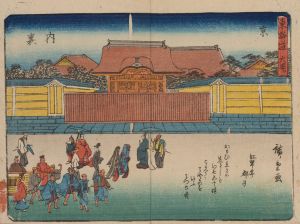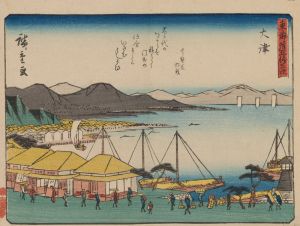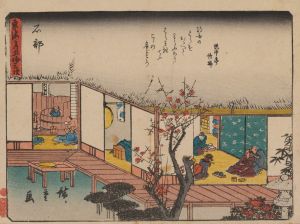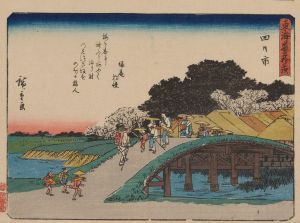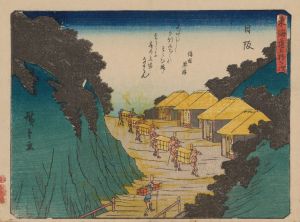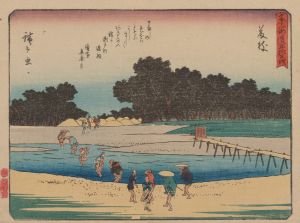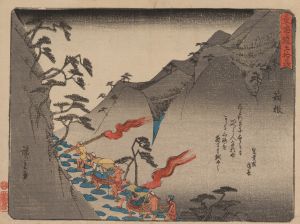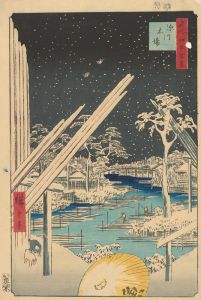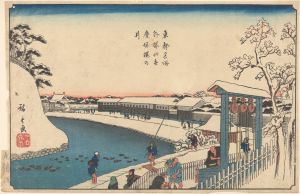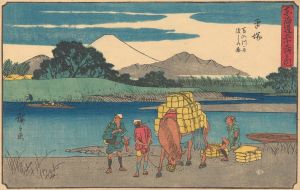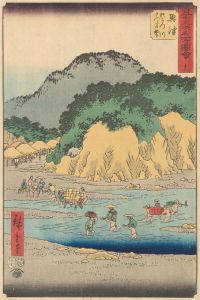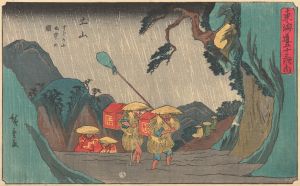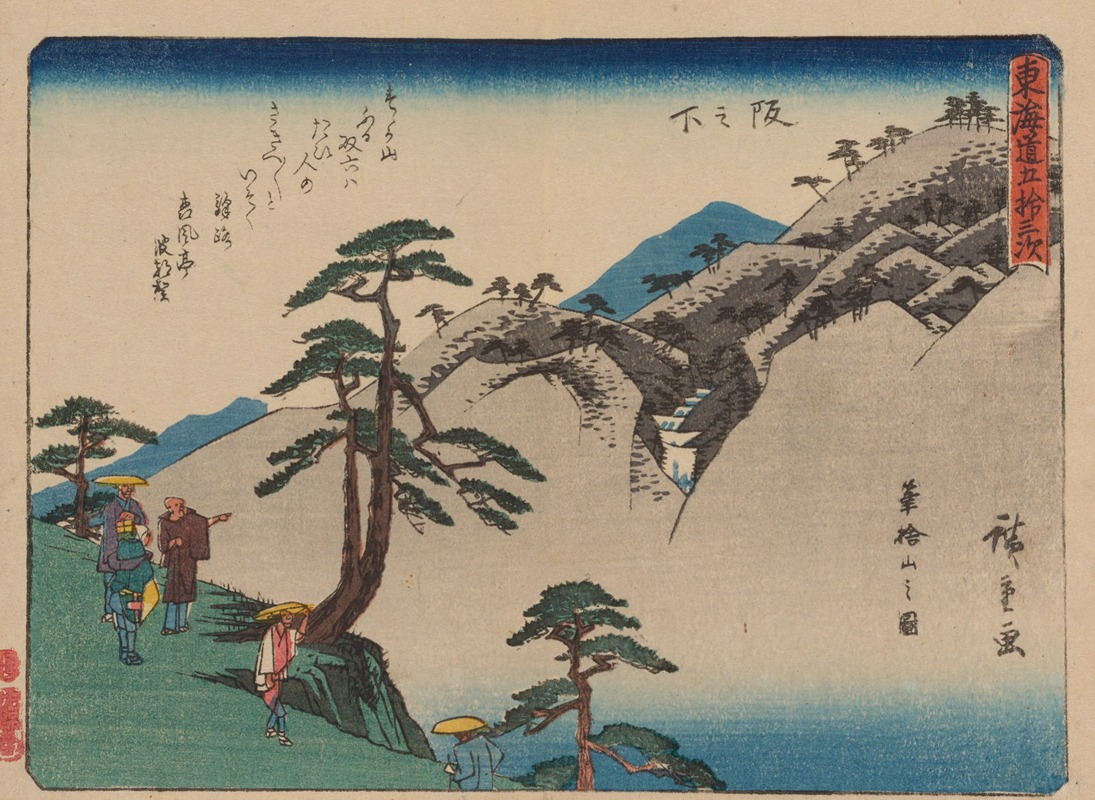
Tokaido gojusantsugi, Pl.49
A hand-painted replica of Andō Hiroshige’s masterpiece Tokaido gojusantsugi, Pl.49, meticulously crafted by professional artists to capture the true essence of the original. Each piece is created with museum-quality canvas and rare mineral pigments, carefully painted by experienced artists with delicate brushstrokes and rich, layered colors to perfectly recreate the texture of the original artwork. Unlike machine-printed reproductions, this hand-painted version brings the painting to life, infused with the artist’s emotions and skill in every stroke. Whether for personal collection or home decoration, it instantly elevates the artistic atmosphere of any space.
Andō Hiroshige's "Tokaido gojusantsugi, Pl.49" is a woodblock print from the renowned ukiyo-e series titled The Fifty-three Stations of the Tōkaidō (Tōkaidō Gojūsan-tsugi no Uchi), created during the Edo period in Japan. This series, first published in the early 1830s, is one of Hiroshige's most celebrated works and depicts the fifty-three post stations along the Tōkaidō road, a major route connecting Edo (modern-day Tokyo) and Kyoto. The series captures the landscapes, daily life, and travel culture of the period, blending artistic beauty with documentary detail.
Plate 49 corresponds to the station of Kusatsu, the fifty-second station on the Tōkaidō road. Kusatsu was a significant post town where travelers could rest, dine, and prepare for the next leg of their journey. It was also a junction where the Tōkaidō intersected with the Nakasendō, another major route of the Edo period. Hiroshige's depiction of Kusatsu in this print reflects his characteristic style, combining vivid colors, dynamic compositions, and a keen observation of human activity.
The scene in Plate 49 portrays a moment of interaction between travelers and local residents. A palanquin bearer is shown carrying a passenger, while other figures engage in various activities, such as walking or conversing. The composition emphasizes movement and the bustling atmosphere of the post town. Hiroshige's use of perspective and attention to detail bring the scene to life, offering viewers a glimpse into the rhythms of travel and commerce during the Edo period.
Hiroshige's The Fifty-three Stations of the Tōkaidō series was highly influential, both in Japan and abroad. It played a significant role in popularizing the Tōkaidō road as a subject of artistic and cultural interest. The series also contributed to the development of landscape art within the ukiyo-e tradition, showcasing Hiroshige's mastery in capturing the natural and human elements of his time.
Today, "Tokaido gojusantsugi, Pl.49" is regarded as an important example of Hiroshige's work and a valuable historical document of Edo-period Japan. The print, like others in the series, continues to be studied and appreciated for its artistic merit and cultural significance.





